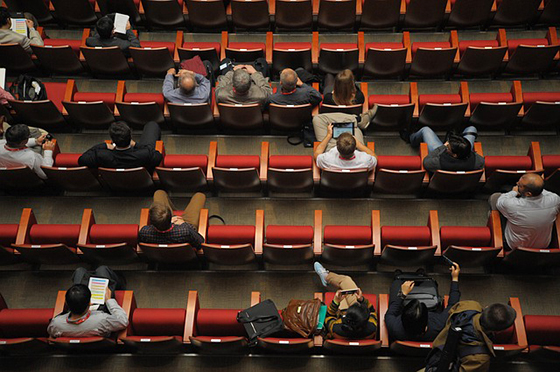Trade shows are miniature cities of compressed space and time that have very little variability. Producer or participant, we’ve all come to an acceptance, whether we like them or not, of the standard building blocks of a conference.
In the blog post, “A Letter to the Board,” Don Neal noted that association events haven’t changed since their inception, often 50+ years ago. Incremental improvements are made on what is a redundant format, or as Neal explained, “better sameness.”
“We get a little better every year, but still, we offer almost the identical educational format, trade show, keynote speakers and the handful of networking opportunities as we have for the past 30 years,” said Neal.
Trade shows don’t necessarily have to fall into that format. We can eliminate certain elements. Here’s where I suggest we start.
1: The default one-hour session
Just because our day is cleanly divided into one-hour increments, that doesn’t necessarily mean all presentations deserve the same amount of time to disseminate necessary information. Speakers often find themselves creating filler material to stretch 20-minutes of content into a one-hour presentation.

New solution: While it’s going to triple your editorial and booking effort, aim for much shorter 20, or even 17 or 18 minute sessions. By providing a unique and short time frame you’re communicating to the speakers to not half-ass their presentations. Get it down, and get it done on time. Most people don’t script a 60-minute presentation. Limit the time frame below 20 minutes, and all of a sudden there’s more editing and rehearsing, which results ina better presentations.
2: The unproduced self-indulgent panel session
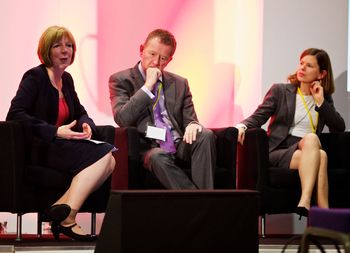 Far too many panelists arrive with zero plan, no inside stories, and think the audience is eager to hear the sound of their voice. If each conference panelist knew they could easily be replaced with almost anyone in the audience, they might not act like such a pompous ass.
Far too many panelists arrive with zero plan, no inside stories, and think the audience is eager to hear the sound of their voice. If each conference panelist knew they could easily be replaced with almost anyone in the audience, they might not act like such a pompous ass.
Sadly, the production part of most panel sessions ends after booking the moderator and panelists. Don’t count on a great performance if your production plan is to just show up and hope for the best.
New solution: Like anything else you’d expect to see on stage, produce the performance. At bare minimum get all the panelists on a 30-minute call before the event to discuss the topics, what needs to be assumed, and what you expect to deliver to the audience.
3: Letting panelists introduce themselves in a panel session
There’s no better way to kick off a giant panel snoozefest than to let the panelists first introduce themselves “for a few minutes.” It’s unnecessary and a giant waste of time. Everyone in the audience can read the program or they could jump onto LinkedIn and read the panelists’ bios there.
New solution: Introduce the panelists by announcing their names, titles, and companies, and then immediately jump into the most important question, which is the title of the session.. That’s why everyone is in the room. No need to survey the audience. For more, download and read “More Schmooze, Less Snooze: How to Deliver the ‘Most Talked About’ Panel Session.”
4: Requiring presenters to submit their presentation three weeks before the conference starts
Since everyone updates their presentation up to the last minute, this is the most inane requirement that is purely a waste of everyone’s time. If you want to save some time in production, start here. Think about the hours that are wasted by the coordinator who has to hound presenters to “get their presentation in on time” to the poor schlub who has to copy and paste the file onto the computer knowing full well it’s going to be replaced just minutes before the presentation.
New solution: Dramatically cut down on production time and money by letting everyone be an adult, trusting they’ll have their presentation with them.
5: The awards ceremony
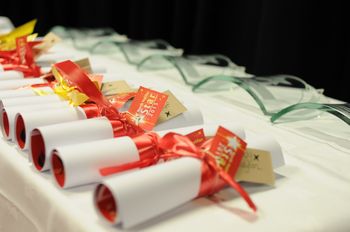 What better way to reward people who paid to come to your event to learn, gather leads, and network than to create an event that prevents attendees from doing any of that. An awards ceremony is the reading of a list of names, a parade of people walking on stage, grabbing an object, and then posing for a picture. The only people who enjoy this are the people receiving the award. For everyone else, it can’t possibly be anything else but complete torture. Why irritate 95 percent of your audience?
What better way to reward people who paid to come to your event to learn, gather leads, and network than to create an event that prevents attendees from doing any of that. An awards ceremony is the reading of a list of names, a parade of people walking on stage, grabbing an object, and then posing for a picture. The only people who enjoy this are the people receiving the award. For everyone else, it can’t possibly be anything else but complete torture. Why irritate 95 percent of your audience?
New solution: Never ever ever hold another awards ceremony. Simply replace that time with some entertainment, networking, or event programming.
6: Disengaged booth staffers
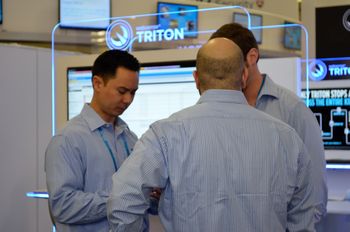 The people working the booth, not the booth signage, are both the greatest attractors and detractors of attendees. If an exhibitor is staring at their phone, working on their computer, chatting with their fellow coworkers, or appearing to be bored, no one is going to stop in their booth. This yin and yang of exhibitor ineffectiveness is a self-fulfilling prophecy. You’re bored because no one is visiting your booth. No one is visiting your booth because you look bored.
The people working the booth, not the booth signage, are both the greatest attractors and detractors of attendees. If an exhibitor is staring at their phone, working on their computer, chatting with their fellow coworkers, or appearing to be bored, no one is going to stop in their booth. This yin and yang of exhibitor ineffectiveness is a self-fulfilling prophecy. You’re bored because no one is visiting your booth. No one is visiting your booth because you look bored.
New solution: Engage with that person who is walking by your booth right now. If you don’t know how to do that pick up a copy of my book “Three Feet from Seven Figures: One-on-One Engagement Techniques to Qualify More Leads at Trade Shows” available at ThreeFeetBook.com. And if you want to really kick ass and blow away your competition, contact us for exhibitor training.
7: Googleable presentations
I learned this rule from Surj Patel, who used to produce many of the GigaOm events. His litmus test for rejecting a presentation was “If I can Google it, then it’s not worth presenting.” If I can read or watch this presentation online then why should anyone show up at my event?
New solution: Rewrite your submission guidelines to say that all presentation content must be original and provide insight that can’t be found anywhere else online.
8: Enforcing the use of an event-specific PowerPoint template
Why? Why? Why?
Requiring presenters to use the event’s PowerPoint template is a completely unnecessary exercise. Enforcing conformity is the worst idea for an event that’s supposed to be about sharing and spreading new ideas.
New solution: If the goal is to present a sponsor logo alongside the speaker’s presentation, put up signage or create a slide that goes before every speaker’s presentation, and let the speaker create their presentation any way they’d like.
9: Self-indulgent sizzle reels
For trade shows and conferences, I want these to die a horrible hot death. Traditionally, a conference sizzle reel is a promotional video that is shot at the current event to sell next year’s event. Every event producer thinks they need to produce one for promotional reasons, and yet every single one looks exactly the same because they all follow the exact same formula and provide no unique information.
Here’s the format:
- Music ramp up.
- Generic shots of the city where the event is being held.
- Time lapse video of stage being built.
- People entering the building.
- People at the registration desk receiving their badge.
- Beauty shots of presenters on stage (no words heard).
- Sweeping shots of people sitting in seats.
- Keynote speaker on stage saying it’s great that they’re here or thanking the audience for making the event/company number one.
- Exhibitor signage.
- People talking to each other, shaking hands, laughing.
- Interviews with people telling you how important the event is, that there’s great conversation, valuable insight, and great people that will actually talk with you.
All sizzle reels follow this self-indulgent informationless pattern. Watch this video and you’ll see.
Here’s all the insight you get out of that video.
- Hear and meet wonderful speakers
- Opportunity to focus on your business
- Lots of information at the roundtables
- Lessons learned for the organization
- It’s great to bring your team
- Information is so useful
- You’re going to learn something
- Ideas pay off in the long term
Does that sound like EVERY SINGLE EVENT YOU’VE EVER BEEN TO?
Still don’t believe me? Then watch all these videos and you’ll see they follow the EXACT SAME FORMULA!
- Sponsors at SaaStr Annual 2016
- TEAMS Conference & Expo
- Meetings Quest Bloomington
- 2014 Red Hat Summit: Recap
- Tech Crunch Atlanta – Event Recap Video – Crisp Video
You could cut and paste any element from one video to the next and it wouldn’t change one thing.
New Solution: First, stop making such self-indulgent sizzle reels that are all about you, the event producer, and not the attendees. If there’s so much amazing content coming out of your event, then show it, don’t tell.
Two alternatives that capture the buzz of an event are fun “man on the street” style videos and “end of show” report videos. Bothformats showcase the attendees and speakers, and their wisdom. For more, read my article, 21 Tips for Producing Funny “Man on the Street’ Videos.
10: “Can I scan you?” as an opening line
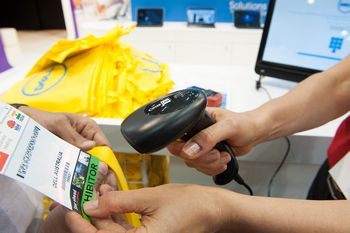 After you create a rapport with someone, it’s perfectly normal to ask for their phone number or email address. But how bizarre would it be if that was the introduction?
After you create a rapport with someone, it’s perfectly normal to ask for their phone number or email address. But how bizarre would it be if that was the introduction?
When a booth staffer opens with “Can I scan you?” what they’re really saying is “Can I have your email address and phone number?” If only a socially inappropriate boar would say something like that, why would any exhibitor instruct their staffers to make “a scan” an opening request?
New solution: Sure, you can ask for a scan, just don’t make it the opening line. If you’re offering something in exchange for the information, then explain the benefit (e.g., giveaway, prize) before you ask for the scan.
11: Measuring event success only by number of scans
Most often when you talk to people about trade show success the only metric they’ll cite will be the scans, which are actually leads that are inevitably fed into some type of CRM or marketing automation system.
If leads are all you want, there are far cheaper ways to acquire them than by attending a trade show.
New solution: Look at other variables beyond leads, such as qualified leads, relationship building, education, and content creation so as to amortize your cost plus see a much faster return on investment.
12: Not following up
 Why are you collecting business cards if you have no intention of following up? Do you have a craft project you’re working on? Maybe you need some additional bookmarks? Or maybe, like that diet that you keep trying to start, you said to yourself that this is the conference where you’re going to follow up with everyone, and yet you never do.
Why are you collecting business cards if you have no intention of following up? Do you have a craft project you’re working on? Maybe you need some additional bookmarks? Or maybe, like that diet that you keep trying to start, you said to yourself that this is the conference where you’re going to follow up with everyone, and yet you never do.
New solution: If you’re going to collect a business card make it clear that you’re going to follow up, why you’re going to follow up, what you’re going to follow up with, and then actually do it.
13: Not responding to follow up
I’m blown away with how people will voluntarily hand over their business card, which is a request for communication, and then ignore that communication when it’s offered.
New solution: Respond.
14: Accepting a LinkedIn connection request and still refusing to follow up
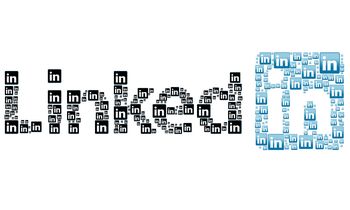 Emails and phone calls go unanswered, but you’re willing to accept the LinkedIn request? This is effectively saying, “Yes, I want to connect with you professionally, just don’t actually use that as a means to communicate with me.”
Emails and phone calls go unanswered, but you’re willing to accept the LinkedIn request? This is effectively saying, “Yes, I want to connect with you professionally, just don’t actually use that as a means to communicate with me.”
I get it. You’re busy. Accepting a LinkedIn request only requires a single click. You may think you’re connecting with that person by accepting that request, but clicking a button does not constitute a relationship. If you don’t want that relationship, and you don’t want to talk to that person, then don’t accept their LinkedIn request.
New solution: See above solution.
15: Presenters who do not test their presentation
We’ve all been in one of those conference sessions where something goes haywire with a presentation. It’s usually a video not playing, audio not working, or there’s a missing slide.
New solution: Be professional. Test your presentation before it’s your turn to speak.
16: Exhibiting without purpose
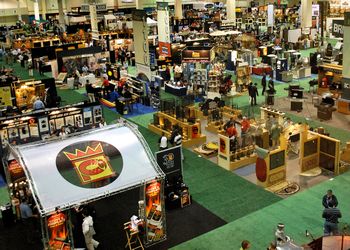 Almost all organizations that exhibit at a trade show spend an inordinate amount of time thinking about the message and the new story they’re going to tell. For the rest, they just do the same booth they had last year, staff it with a few people who can answer questions, and then show off absolutely nothing new. They’re there just to be there. If they weren’t there, their competition could define their situation for them. Those exhibitors are at the event not to win, but to not lose.
Almost all organizations that exhibit at a trade show spend an inordinate amount of time thinking about the message and the new story they’re going to tell. For the rest, they just do the same booth they had last year, staff it with a few people who can answer questions, and then show off absolutely nothing new. They’re there just to be there. If they weren’t there, their competition could define their situation for them. Those exhibitors are at the event not to win, but to not lose.
New solution: Have more respect for yourself, your company, and the audience. Even if you don’t have a new product announcement offer up some new tutorials, research, or another fun way to engage with attendees.
17: Non-millennial speakers who think they’ve got millennials figured out
There’s nothing more pandering than hearing someone who is not a millennial offer up some hackneyed explanation of the entire group. With a wave of their hand they’ll define an entire age group as being buried in their phone, highly demanding, or they have a three-second attention span. It’s a bogus perception that makes the non-millennial look like they’re out of touch.
New solution: I suggest the non-millennial have a conversation with the millennial for more than three seconds.
18: Landfill schwag
 Nobody needs another ugly t-shirt, mug, stress ball, or cheap water bottle. Still, event exhibitors ship boxes of schwag across the country so it can end up in the garbage cans of hotel rooms that surround the convention center.. If you’re giving away a non-functional item such as a blinking light bracelet or pin, expect to see them piled up in the garbage bins when the trade show floor hours are over.
Nobody needs another ugly t-shirt, mug, stress ball, or cheap water bottle. Still, event exhibitors ship boxes of schwag across the country so it can end up in the garbage cans of hotel rooms that surround the convention center.. If you’re giving away a non-functional item such as a blinking light bracelet or pin, expect to see them piled up in the garbage bins when the trade show floor hours are over.
New solution: If the schwag item didn’t have your company name on it, would you keep it? If so, then it’s ok to buy and giveaway.
19: Attendees who have zero respect for their own time and their company’s time and money
Attending a trade show is a costly prospect for the individual and the company. There’s the expense of the event, the air travel, the hotel, plus your time not being at the office working. It’s a cost that inevitably hits multiple thousands of dollars.
Yet even with all that knowledge, attendees are chronically hoodwinked into standing in lines for hours to get t-shirts, a chance to win an iPad they don’t need, or to get a photo with a celebrity.
New solution: Stop collecting practically worthless trinkets. Have some friggin’ respect for yourself and your company and use your time to learn and network.
20: Everyone taking the same notes at the same time
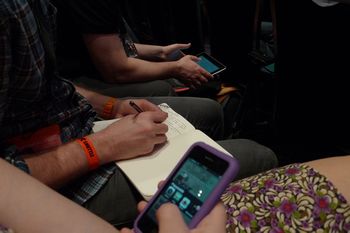 This is yet another exercise in futility. A speaker stands on stage, talks, and then 100+ people in the room write down the same notes.
This is yet another exercise in futility. A speaker stands on stage, talks, and then 100+ people in the room write down the same notes.
New solution: Use an online document for communal notetaking. Give everyone access to the document and let them participate. If one person types in a note, nobody else has to repeat it. But the extra advantage is you have the hive knowledge of the room to add context to what the speaker is saying. Here are four tools you could use (Note: Typewith.me is no longer operational, but piratepad.net is a good alternative.)
CONCLUSION: Time to end the trend of “better sameness”
Many aspects of trade shows and conferences are valuable and necessary. People do have to meet, network, and learn from each other. But all formats, education, and execution can be altered and explored.
Always ask yourself, “Does it have to be done this way? What purpose does it serve beyond ‘that’s the way we’ve always done it?’”
Always be exploring new avenues of connecting and educating.
Creative Commons photo credit to billypalooza, Sean MacEntee, NHS Confederation, Steven Lilley, CeBIT Australia, Ciera Hozenthal, Esther Vargas, Reno Tahoe, Ellen Fitzsimons, and Andreas Klinke Johannsen.

